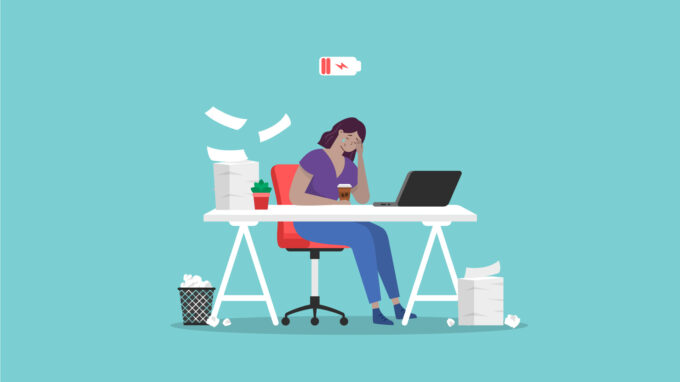
Can We Avoid Burnout?
We often use the term “burnout” as a vague label for an exhausting day or week of hard work, but actual burnout is more than

There are lots of conversations around what works and what doesn’t when it comes to diversity, equity, and inclusion practices. I spent a long time looking into why some of the solutions, despite their good intention, don’t work. In the end, I came to the theory of Modification vs. Creation! I think our solutions don’t work when we try to modify the existing practices to something more inclusive. On the other hand, modification is not accessible, whereas creation brings up a new solution, based on the culture, individuals, and needs of each team. An accessible solution!
As an educator, I was always looking for ways to engage my students and make the material more accessible to them. I think the idea of creation came to me a long time ago, in my teaching years, but I did not have the words for it at the time. I’ve seen students thrive more when something as small as desks’ shape in classrooms changed to circular. In a circular format, students had better access to the board, teacher, and each other. Communication happens not only through words but eyes. The circular format is not modifying the classroom shape. It’s creating a new shape. Modification would be changing students’ seats in a previous shape based on their height, or who speaks to whom more, or bringing the kids with lower attention spans to the front seats. Modification is asking students/employees to do a different thing, whereas creation is giving them a new and more accessible playing ground.
Let’s bring this to an organizational perspective and look into hiring policies. To avoid biased decisions, companies decided to scrap out the name when staff is assessing the resume or leave the initial assessment to AI. This is modifying the process. Whereas creation is intentionally deciding to hire from a specific social group to balance out the diversity. It is to put more than one person on the hiring committee in a way that the committee is diverse enough to see a candidate from different perspectives. It is to give access to more social groups to the job posting! In creation, there is intentionality, but in modification, there is only “hope”. Hope that the solutions would work!
I think by now we all know that inclusive culture won’t happen in a day or two. Anyone asking me how to build an inclusive workplace, I would say first it needs time and intentionality. We need to know this is a long road we’re stepping into. I think what is trending now, having a DEI department that mostly does events each month, is 100% only a modification. These events are great and needed but what makes a sustainable change is when equity and inclusion practices get embedded in every process of every department. How much do department leaders know about equity practices? Is that a job requirement when hiring a new manager? Is it a part of onboarding? How are we keeping updated with being inclusive? Because people’s needs would change over time and so do their access needs which result in new inclusive practices. New people are coming into our team and again, the same story. We need to keep up!
Sustainable changes happen when both people and structures change. By only hiring a BIPOC person as a DEI director, sustainable change won’t happen. But by creating new structures where everyone has a chance to speak up, the playing ground is more accessible to people. So they practice until it becomes a behaviour. When something becomes a behaviour, it travels everywhere with that person. To a new organization, new community, neighbourhood, city, etc.
Many of us think if we look into individual needs and adopt a creation perspective, the organization would become a mess! But I think not. It gets chaotic when we try to ACCOMMODATE and modify the existing policy to people’s needs. Whereas if we look into it as a fresh problem, it’ll be accessible, not chaotic. “Thinking out of the box” here is to think beyond existing policies and be open to feedback! Inclusion and accessibility are collective concepts. They are meaningful in teams, but they start with individuals. Racism, sexism, ageism, etc., shows differently in every country. Even in every city and neighbourhood. Individuals have different access needs to feel belong, included, and seen. So I believe that we should start with understanding the community we are working in and remember that there are millions of ways to create an inclusive place. Remember that none of the solutions are universal. None of them are for eternity.
Want to learn more about creation vs. modification? Check out our podcast with Layla.

We often use the term “burnout” as a vague label for an exhausting day or week of hard work, but actual burnout is more than

At Dialectic, we think a lot about DEI, soft skills, and leadership training that makes organizations more inclusive and human-friendly. When we team up with

Ageism commonly affects women over 40 in the workplace. In spite of their tremendous wisdom and experience, women over 40 may be passed over for
Dialectic helps organizations improve the way people work, learn, and collaborate through person-centred design and the latest in social science.

Does your team struggle with soft skills?
Use our app or upload Snippets to your LMS to build better habits in minutes with scenario-based microlearning.
Sign up for our weekly roundup of the latest on DEI, leadership, collaboration, and learning science.
© 2024 Dialectic. All rights reserved. | Contact Us | Privacy Policy | Terms of Use | AODA Statement
See how easy it is to activate soft skills in your organization. Soft skills training on 3 key topics: DEI, Leadership, and Collaboration.